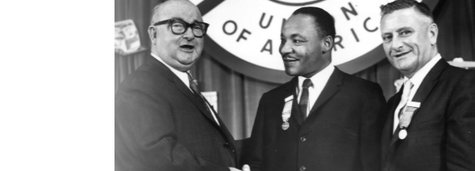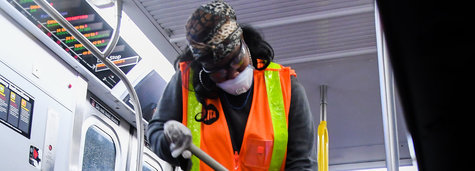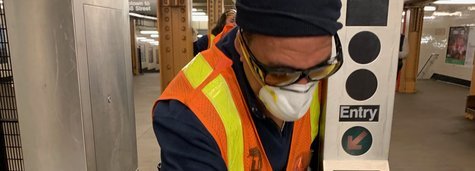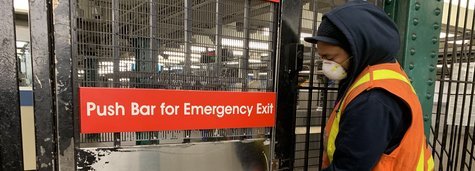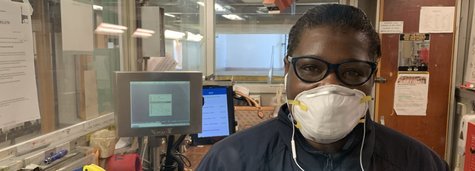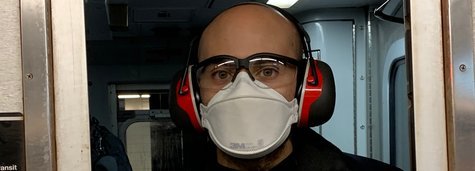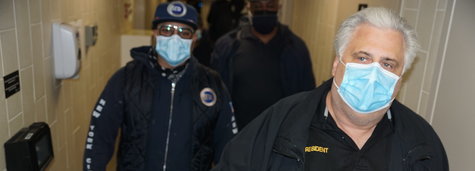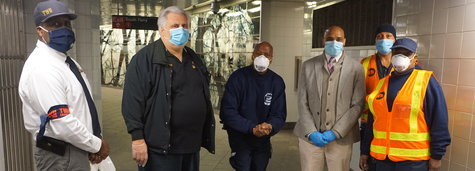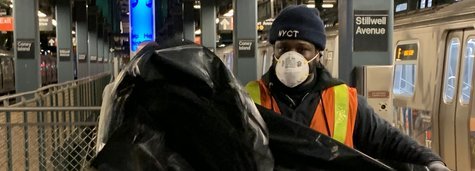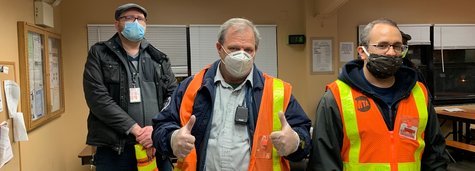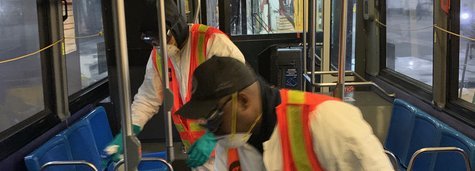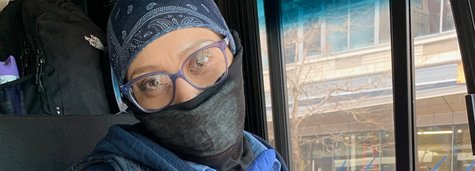Labor's tough customers: The city's new breed of old-school union leaders are ready to rumble
Five months into his presidency of Transit Workers Local 100, John Samuelsen is ratcheting up the heat to prevent the MTA from trimming several thousand jobs and altering work rules. He contrasts the plight of transit workers sent into "filthy, disgusting conditions" with MTA head Jay Walder's "raking in the dough."
No surprise, perhaps, for a burly, selfdescribed son of "two working stiffs from Brooklyn" whose insurgent TWU campaign alleged that his predecessor - who led the 2005 transit strike that brought New York to a near standstill - was insufficiently militant.
At the United Federation of Teachers, strapping former construction worker Michael Mulgrew has an outsized personality and booming voice to match. As New York officials are learning - including "numb nuts" Joel Klein (a.k.a. the schools chancellor) - Mulgrew doesn't mince words.
Even before assuming office 10 months ago, this Staten Island son of a waitress became the huge local's public face by leading protests against budget cuts at City Council meetings, in Albany and in the streets.
Meanwhile, former Queens and Brooklyn hospital cop Greg Floyd, once the youngest hospital police captain in New York history, recently took the reins of Teamsters Local 237. He's running a far more energized ship than the leader he replaced, unsurprising since Floyd is three decades younger.
Each in his 40s, these men reflect a generational shift in New York's labor movement, arguably the country's most powerful. Moreover, they head major locals interwoven with city life. The UFT's 145,000 members make it a pivotal player in education and politics. Local 100, key to New Yorkers getting to work every day, is TWU's biggest affiliate with 38,000 members. Local 237's dispersed membership gives it clout in housing, health and public safety agencies, and its 24,000 members constitute the largest local in the International Brotherhood of Teamsters.
We are seeing the new face of the American labor movement emerge. It is tough, it can be uncompromising, and - this is critical - it is weighted toward the public sector. As U.S. manufacturing jobs continue to vanish and the service sector (think Wal-Mart) remains difficult to organize, government has emerged as labor's growth industry.
This was unimaginable a half-century ago, when private industry was heavily organized and few government workers were in unions. But last year for the first time, the expanding public sector, though still five times smaller than the private sector, leaped past it to become - by 500,000 members - the majority within the labor movement.
In a time of economic hardship, this is setting the stage for classic conflicts. With governments at all levels facing budgetary shortfalls, the salaries, pensions, job security and other benefits of public employment are coming under intense scrutiny. Critics on the right sense an opportunity to go after two of their prime targets - government and unions - in one fell swoop.
It's no surprise that their attacks are finding sympathetic audiences among some private-sector taxpayers, since so many working and middle-class people face desperate conditions, with high unemployment and foreclosure rates and economic anxiety all around. Moreover, they're the ones paying the freight for the public-sector employees.
Government workers perform critical - often dangerous - duties, and whatever benefits they enjoy result from open negotiations between labor and management. But that doesn't change the fact that they're now under siege - or that the tensions are likely to rise before they recede.
From California to Illinois to New York, teachers are excoriated for compensation said to take resources from students, transit workers are targeted for allegedly abusing sick day policies, while county employees hear that their benefits risk bankrupting local governments. The host of a national TV business show told me on air a few days ago that unless government workers sacrificed their "lavish" pensions, children would have "worse health" because of program cuts.
The likes of Samuelsen, Mulgrew and Floyd could react to the turning tide by going with the flow. Instead, they're growing more assertive, unafraid to use their bully pulpit or their political muscle to make their point.
In reality, they have little choice, because their tough stances stem from more than personality. They fit the times.
With their newfound status, they are the last best hope, for the foreseeable future, of a struggling labor movement. If a new Walter Reuther or Jimmy Hoffa is to arise, he may well spring from the fertile environment of public-sector unionism, where workers are less susceptible to being fired or intimidated by employers, and where their jobs can't readily be exported. By contrast, some private-sector unions once known for militancy have found themselves forced into concessions as companies and even entire industries - consider auto and the UAW - face collapse.
To truly understand what's fueling the no-nonsense leadership that's emerging, we must go back a few years.
Even before the financial crisis and unemployment surge, the country was undergoing a shift in wealth with wages lagging rising productivity. Corporate profits assumed the highest share of the Gross Domestic Product in many decades, and wages/salaries the lowest. The virtual deindustrialization of America, with good-paying factory jobs - disproportionately union - going overseas has exacerbated all these trends.
So labor leaders increasingly feel pressure to stand firm and defend their members. Indeed, what we are witnessing in the emerging New York leadership is also reflected on the national level, where Rich Trumka, a combative former coal miner, has replaced the professorial John Sweeney as AFL-CIO president.
But just when working people sorely need a forceful advocate, many unions have found themselves hard-pressed to effectively fill that traditional role. Not only has labor's strength declined because of the reality of ebbing membership, employer aggressiveness and job flight, the widespread perception of unions as irrelevant relics of a bygone era has further reduced their influence.
It's impossible to overstate how much the notion that labor is a dinosaur grates on union leaders or rank-and-file members. For everything they are experiencing tells them just the opposite: that rarely has a strong labor movement been more necessary than right now.
It's no accident that average people find their living standards, pensions and job security threatened at the very time labor's been weakened, any more than it was a coincidence that the greatest expansion of the middle class - from the late 1940s to the mid-1970s - marked the apex of labor's strength.
Why, at the very time corporate influence has grown more powerful, more concentrated and more distant, would working people best cope for themselves as individuals without a collective voice?
One other factor also has helped wipe the smiles from labor leaders.
After doing more to elect this President and this Congress than ever before, folks in the labor movement have quietly stewed for months about the results or, more precisely, lack thereof. Where, they wonder, are the promised labor law reforms, renegotiated trade deals or jobs? Why has their top legislative priority, the Employee Free Choice Act - which would help reverse falling union numbers - languished on the back burner?
And so a new generation of labor leaders - tough, energetic and frustrated with the status quo - has come to the fore, and isn't going away anytime soon. Particularly in a place like New York City, where a powerful labor movement goes hand-in-glove with a prominent public sector, residents can expect to get used to the countenance and tone of a Samuelsen, a Mulgrew and a Floyd.
Like them or not, you'll know they're around, because you'll hear and see them fighting.
Dine, author of "State of the Unions: How Labor Can Strengthen the Middle Class, Improve Our Economy, and Regain Political Influence," is a Washington-based journalist and a frequent speaker on labor issues. He is from New York City.

